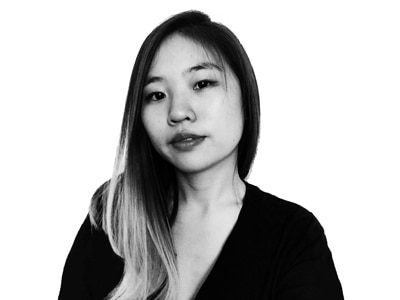Lisa M. Berman has a couture dressmaker, a woodworker, and a fashion business owner in her family. So you might say she was destined to become a mover and shaker in a creative field. After successfully launching and running her fashion jewelry business, Berman pivoted. She took the reins of Sculpture To Wear, a jewelry gallery, in 1999. While showcasing one-of-a-kind art jewelry, she began educating her clients about art jewelry. In addition to being a gallerist, Berman also heads Berman Arts Agency. In this interview, we talk with this savvy and creative businesswoman about her multifaceted career.

You are an influential figure in the art jewelry scene. Tell us more about your background.
Lisa M. Berman: I’m originally from Ohio. In our family, hand-crafted items were part of our daily lives. My great-grandmother was a couture dressmaker and costume designer in Philadelphia. My great-grandfather was a woodworker. (All our family members were rocked in the cradle he made 100+ years ago, me included). The Fostoria Glass Company and the industrial ceramicist Russell Wright were based in the area. These companies produced some of the first versions of good “design for the masses.” We used them daily.
We had inventors in the family, too. One designed a tire tread. Firestone bought the patent for it and made it theirs. Another designed a train track changer for the mass railroad. A cousin, Dr. Virginia Apgar, invented the Apgar Score in 1952. It has saved the lives of millions since 1952.
My mother and I took our first cross-country car trip to the West Coast when I was five. We happily decided to call Laguna Beach home. It was the complete opposite of Ohio, but it was also similar because it was founded as an artist colony in the early 1900s. The beach was my playground. I also spent time among art and artists. I was constantly taken to museums and gallery art openings. My mother owned her own fashion design company, called Instant Reactions. I used to skateboard in the halls of the California Mart, the fashion headquarters of the West Coast. Artists, designers, and makers were part of my central landscape. Fashion magazines, full of inspiration, were my design encyclopedias.
I started taking jewelry-making classes at age 16 from Vesta Ward, a jewelry designer in Orange County. I met Trish McAlerr (author of Corrugated Jewelry and former president of the Metal Arts Society of So. Cal) there. I had no idea how talented they were. At age 17 I had my first jewelry show. It was at the Laguna Beach Art & Craft Show. How exciting to be part of the “artists scene”!
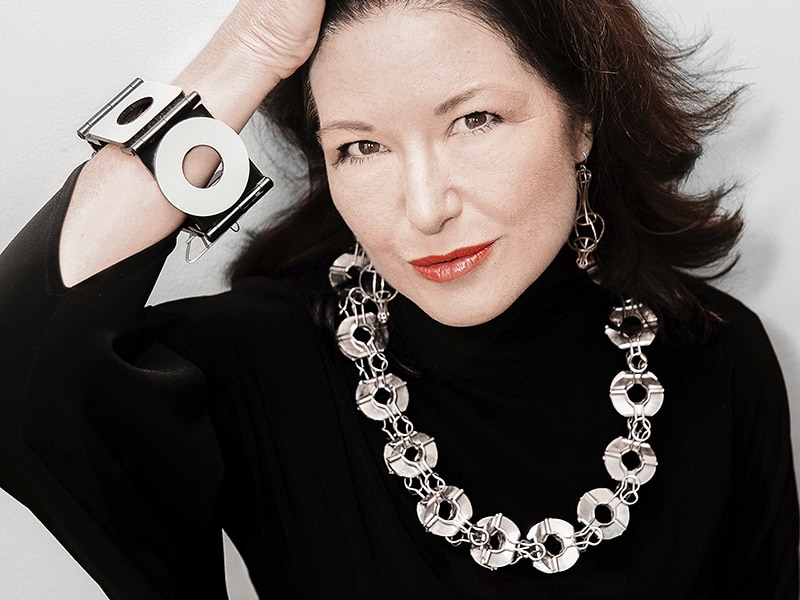
My dream was to attend Stanford University. I had hoped for a full-ride athletic scholarship from playing volleyball in high school. It did not materialize. I changed focus and decided to go into the business of fashion. It was a natural alternative. I already had four years of retail experience under my belt. I knew how to sell. But I wanted to know how to run a business. Looking back, I should have pursued fashion design. That’s because even though I never learned to sew from all the talented seamstresses in my family, I constantly look at garments and find ways to improve their designs.
While attending college at FIDM, I interviewed for my first real job. I was 18. I had to pay someone to type my resume because I didn’t know how to type. I had it printed on chartreuse paper so it would stand out. The vice president of the global manufacturing company asked me to interview. He “wanted to meet the person who would print a resume on that color paper.” I didn’t think it was going well. Executive assistants need to type. But he hired me on the spot! “You are resourceful. You can always learn how to type, but the other shows character.”
I graduated with a degree in merchandising/manufacturing. I then worked as a merchandiser in the active sports industry for companies like B.U.M. Equipment, and Maui and Sons. I also designed Massimo’s first accessory line (handbags and backpacks). I worked for a manufacturer that made goods overseas. This taught me about the import/export business and how every stitch on a product affects the production cost.
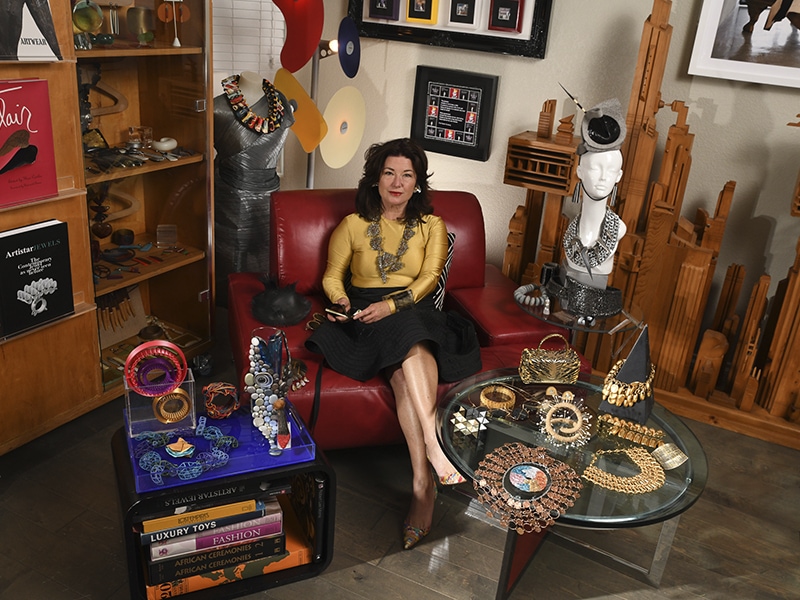
What drew you to art jewelry? How did you turn your passion for wearable art into a flourishing and enduring career?
Lisa M. Berman: I found the repetitious work on monochromatic silver metal dull. I’ve always liked bold color, strong shapes, and movement. I loved Cara Croninger’s dynamic resin work.
I attended Cal State Long Beach school to learn plastics technology for making accessories in acrylics. There, I met Karen McCreary and Teri Brudnak of TDM studios. We were the only females in the class. The male students were car designers and aerospace engineers. We were constantly scrutinized for wanting to make jewelry. In class, Teri and Karen made the jewelry for the TV show Star Trek: The Next Generation. They hand-crafted the items. Next episode, you’d see their work on a Vulcan. The teasing eventually stopped.
From this and my experience in the fashion industry, I launched my first company. It was called Statements Accessories. The jewelry products sold nationwide in boutiques and museum stores. Major department stores like Nordstrom, The Broadway, and May Co also carried it. My specialty design was the “Wave,” a thermoformed clip-on earring. It was and is still a favorite of collectors. (It’s still available on my website). After a year, being undercapitalized and wearing all the hats felt like too much. I was designing, manufacturing, merchandising, selling, shipping, and making in-store appearances. I decided to put things on hold.
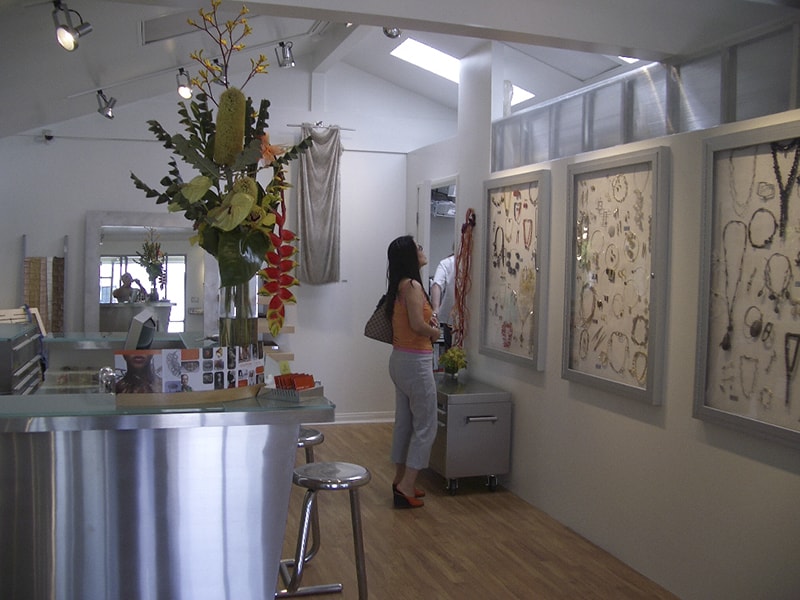
When I acquired the name Sculpture To Wear in 1998, I met Cindy Forbes. She became my first gallery manager. I took a leap of faith, into the total opposite of what I had known for decades. I transitioned from merchandising five seasons a year in the fashion industry to promoting one-of-a-kind wearable art.
I launched my first exhibition, Structural Integrity—Jewelry’s Foundation, in Bergamot Station Art Center, in Santa Monica. It was January 16, 1999. My first gallery was located in the back of the Gallery of Functional Art (Lois Lambert). My office was literally a broom closet. I wrote up invoices and packaged the purchases. At night, I went home to enter invoices into the computer.
Some artists I presented in the first show are still part of the Sculpture To Wear brand. They hold a lasting place in our collective journey (Kathleen Lamberti, Gina Pankowski). The first year was spent educating our audience. (I still do that.) “How could it be considered jewelry without gold or gemstones?”
I hired the right staff and allowed them to excel at their specialty. Former employees list their experience at the gallery as a crucial part of their own careers. Nothing could make me happier.
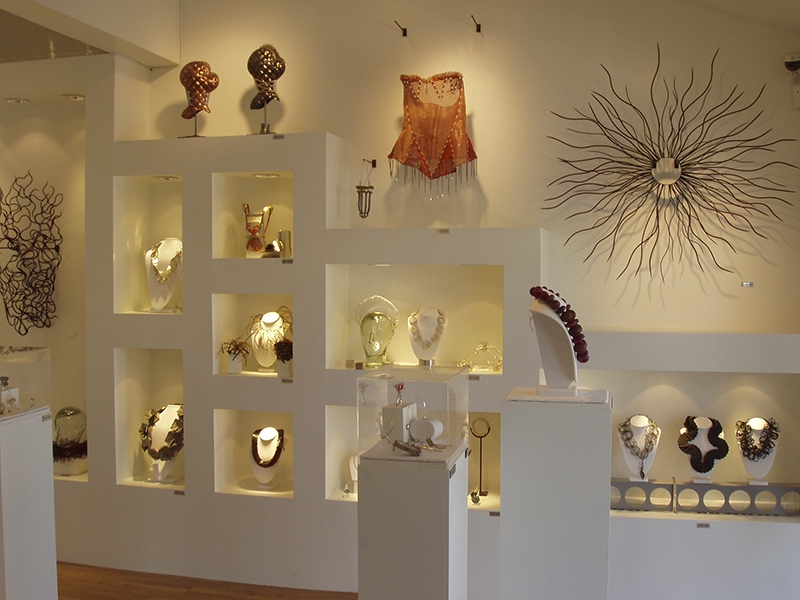
You’re a gallerist, consultant, curator, and writer. What does a day in your life look like?
Lisa M. Berman: That picture looks completely different today than it did when I had a physical gallery. Mostly it’s about targeting a focus, connecting the dots, and juggling a schedule. For the past 20 years, my life has been a continuous calendar. There are gallery exhibitions, installations, media deadlines, overseas calls, museum outings, events, and meetings (on Zoom for the past year and now again in person). As much as I’d like to control things, there’s a natural ebb and flow.
I often take inventory of which activities create actionable results (paid consulting) versus what’s a time extractor (social media). Does there need to be an edit, a navigational recourse, or a complete “exfoliation” to maintain a balance and generate revenue? I’m working remotely now. I truly miss collaborating directly with artists, collectors, and creatives.

Traditional editorial/press coverage has always been an important tool for promoting the artists and shows in my gallery. Wearable art was common in photo shoots 30 years ago. This helped coin the term “statement jewelry.” (It is now a common expression.) The eclectic pieces from the gallery were often incorporated into film and TV shows to accent the actor. They could often be an essential part of telling the story.
I’m thrilled to style and feature acrylic jewelry by Adriana Del Duca of Genos as a focal design element in the upcoming music video by costume designer Swinda Reichelt. I’m excited to reconnect with former collaborators, visual professionals, editors, and stylists from years past: Betsey Potter (governor of the Television Academy for Costumes), Melissa Laskin (Stylists to the Stars and Keith Urban). I’m so happy to revisit my own work, styling Richard Dean Anderson (McGuyver), Eddie Van Halen (for his last tour), and icons from “Women in Film.”
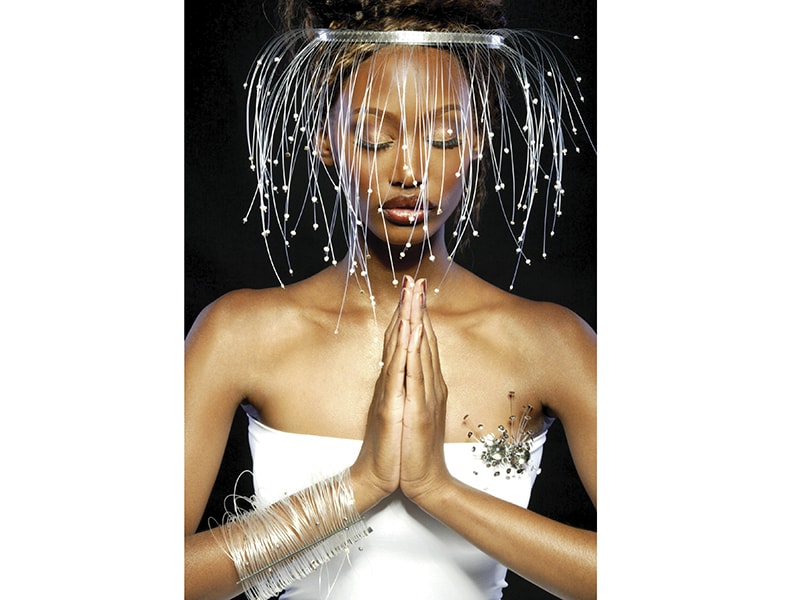
With so much chatter on social media, it’s important not to confuse clicks and likes with true connections. Relationships are a primary conduit to the continued journey. It’s not just who you know, but how to connect them effectively. I’ve had colleagues from my time on the Board of Governors at Otis College of Art and Design, as PR Chair for the Costume Council at LACMA and FIDM Museum Board. They have proven invaluable, even years later.

Sculpture To Wear features wearable art and jewelry by renowned artists. These include Robert Lee Morris and Gina Pankowski. What do you look for when choosing artists to represent?
Lisa M. Berman: When I first launched Sculpture To Wear, I already had an innate sense of what I liked. Still, this was a new genre that I needed to become educated in. I therefore pored through exhibition catalogs and attended SNAG, SOFA, and ACC conferences. I received an onslaught of artist submissions almost daily via snail mail. It was a different world. The entire process was labor-intensive. It was not cost-effective, especially for the artists. They had to send entire sheets of color slides or printed catalogs (then CDs). Yet there was a silver lining: The process was slower, more focused. Because of it, we were really able to connect with the maker. We went deep with Q&A, touching, looking, and trying on work. An internet submission on a flat screen is not a substitute. It does not properly convey a three-dimensional object.
About Gina Pankowski: I’ve always been drawn to architecture and sculpture on a large scale, so her work attracted me immediately. So did Patricia Madeja’s and Sergey Jivetin’s. I once traveled in Canada as a guest of the Canadian government. While lecturing at the Montreal Academy of Metal Arts, I was about to start my presentation when I noticed a poster on the wall. It showed a fantastic necklace that the class was attempting to replicate, or at least create their own version of. I was completely taken off guard. It was Lattis Necklace Number 2. Like a kid without an edit button, I pointed at it. Gleefully I exclaimed, “That’s my piece! I own that piece. It’s at home in my collection!” The professor and students were surprised. It was one of those serendipitous events that keep life interesting.
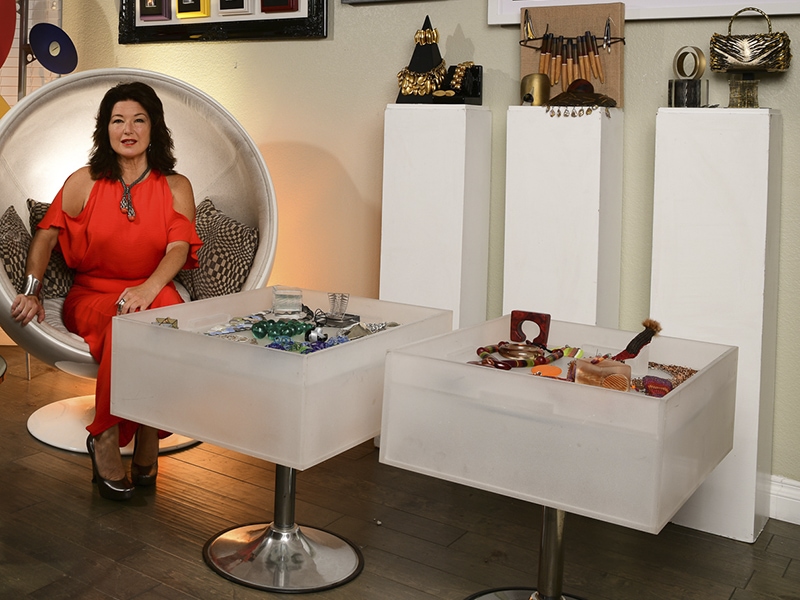
I grew up loving Robert Lee Morris’s work. I saw it in fashion magazines and sometimes on my mother. She owned a few of his pieces. So much of what I studied in fashion design, admired on stylish women, and saw in editorials came from his creative hand. Dozens of his iconic designs have been copied. They are now part of mainstream designs. Young designers and metalsmiths owe much to him for his advancement of their craft. His journey started in the self-taught studio. He hammered metal, experimented with materials, invented news ways to work, took chances, and was resourceful. These character traits resonate with me. It’s incredible to watch him reinvigorate a new generation of inspired collectors from his archival designs. I am honored to have had the opportunity to exhibit his 35-year retrospective at the Montana Ave. Gallery and present his archival collections.
In the selection process, I look for a visual and/or visceral message. How or why was it made? Does it have staying power? Does it have the impact to be great today and next decade? Is it a catalyst for a conversation? What story does it tell? Does it intrigue? Is it a new material? Does it authentically fit the context/theme for which I am curating? I usually have an immediate yes/no response. I will explore more, re-read a concept, talk to the artist directly to learn more, and remain open to a possibility.

Contrary to the Ordinary opened on July 10, 2021. How does the jewelry in this exhibition upend expectations and challenge the ordinary?
Lisa M. Berman: For most exhibitions, I have a theme in mind that is timely and needs to be explored. I build on that idea. This one was literally happenstance. While attending an opening at the Laguna Art Museum, I talked with Jeannie Denholm, the director of SCAPE Gallery (and former Director of the Eli Broad Art Collection in Los Angeles). She said, “I’m just about to open a show of textural work at the gallery. I feel your artists’ work would complement it.” Most exhibitions take months to curate. Sometimes years. I had three days. I walked into her gallery, reviewed the work, and immediately knew what to do.
Jeannie had never included wearable art into her gallery shows of 17 years. But she was a fan of Sculpture To Wear at Bergamot Station. We went on trust. We’re both seasoned professionals with a track record. She left for vacation and came back to an installed show. Her clients loved it. The title Contrary to the Ordinary was her choice.
I like to believe that Sculpture To Wear always challenges expectations and delivers the message “contrary to the ordinary.” If that ever changes, it’s time to hang up my hat. As the second proprietor of the Sculpture To Wear gallery, I feel a deep-rooted sense of responsibility to the name. Much of what I do is legacy driven. By the way, this is not the first collaboration with an existing fine art gallery. Others were the Indelible exhibition at Kopeikin Gallery and the Leica Gallery in Los Angeles.
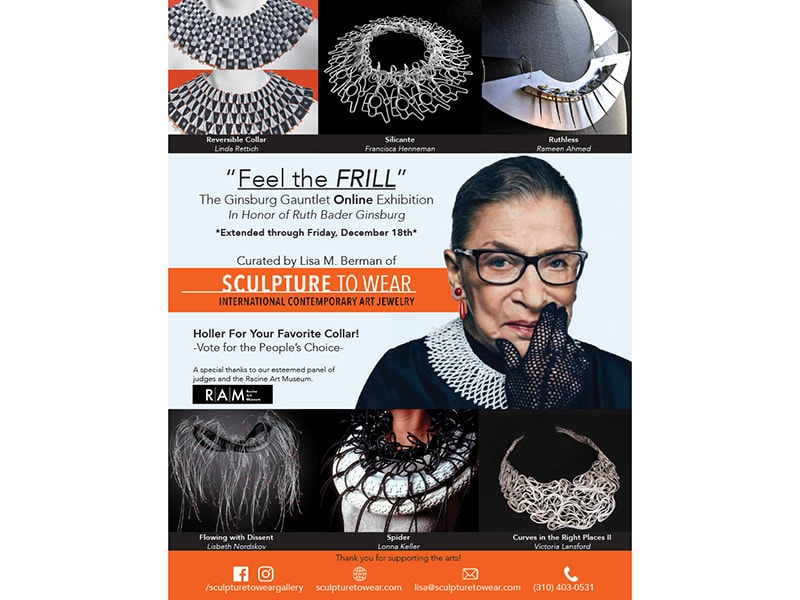
You’ve curated countless exhibitions. Most recent was Feel the Frill. It was an online exhibition to honor former Supreme Court justice Ruth Bader Ginsburg. What was your thinking behind this?
Lisa M. Berman: It wasn’t so much thinking. It was a sense of “must-do, inspired action.” I was very skeptical about curating an exhibition, incorporating pieces, and adding my seal of approval and acceptance to work I had never tried, touched, or seen, by artists I had never met. This was new territory. After Ruth Bader Ginsburg died, I saw how many people were inspired by her accomplishments. I wanted to honor her (as they did).
The vehicle of collars was obvious. Everything about last year and the online exhibition was a learning curve for me. Same for many of the people I collaborate with. The submissions were remarkable. So was the support from the makers. They alerted other artists, helped to market on social media. One in the Netherlands even featured the show twice on her TV show. There was a deep sense of humanity, of humility. There was an allowance for the misgivings of technology. Sales are always dramatically increased when a client can interact with an art piece. That applies whether it’s wearable or not. I really miss interacting with my clients and selling. The silver lining? The exhibition continues online, indefinitely, as does RGB’s legacy.
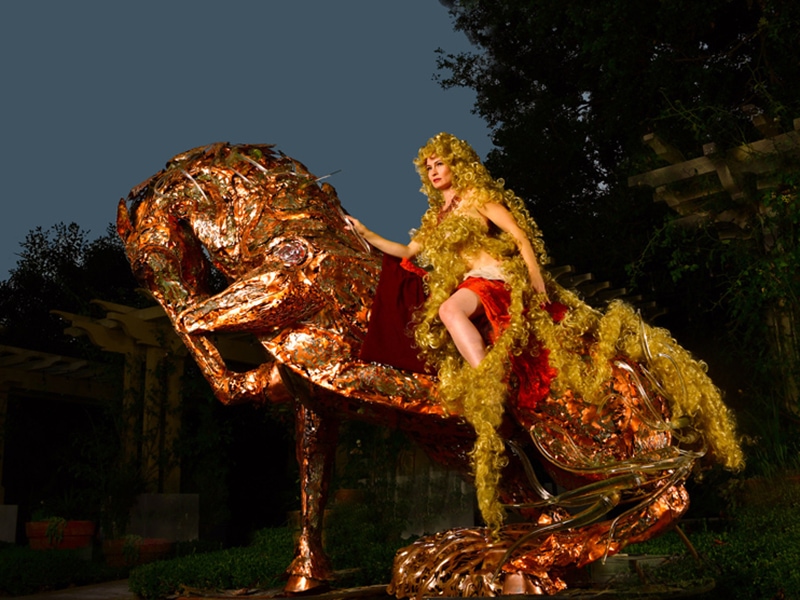
You’ve also spearheaded various large-scale art projects. One of those is the Oropeza Sculpture Garden. Tell us about curating and managing a sculpture garden.
Lisa M. Berman: This was another opportunity based upon timing, trust, and a leap of faith. Mark Kaufman, publisher of Local Arts magazine, introduced me to the sculptor Daniel Oropeza. Oropeza won ArtPrize 2017 (the world’s largest art competition) with his huge glass and metal horse sculpture, Lux Maximus. The sculpture is impressive and stunning. I admire that he is self-taught and tenacious. Everyone told him his vision of melding glass into metal could not be done. Yet he persisted, and won. We were introduced to the owner of the five-acre property. Its lush beauty mesmerized us. We knew it was the ideal location for Lux and other large sculptures by Oropeza. We added nine of his sculptures, along with art by other sculptors: Craig French, Jon Seeman, and Doyle Reno.
Foreshadowing: I visited the celebrated Storm King Art Center in 2000 and was hooked! I was with my then-husband, Robert Berman, an art dealer. Andy Goldsworthy was installing a large-scale work. We were lucky to visit that day! Fast forward two decades. I didn’t know then that I would have the opportunity to realize even a small portion of that dream. Of course, ours is a much smaller garden. I just learned that Helen Drutt’s late husband, H. Peter Stern, co-founded Storm King in the late 60s! What a coincidence!

Recently, you started writing a monthly column for Overjewels. Overjewels is a social commerce platform dedicated to jewelry. What can we expect from your column?
Lisa M. Berman: With almost all new ideas, there will be a learning curve. Add a language difference and business/cultural nuances, and it’s even more challenging. In 2020, I was named the first Brand Ambassador in the United Stated on behalf of Artistar Jewels. They are headquartered in Milan. I was impressed with their incredible publications. The quality of work shown by their global artists is excellent. Not every design resonated with my personal taste. But part of being a seasoned curator is to look again at something you might have missed. Their challenge was communicating effectively with their target audience in the United States. I hope to bridge that gap for them.
Artistar Jewels acts as a curator, publisher, and sponsor of jewelry exhibitions. It seeks galleries to host the work of artists featured in their publications. (There is no financial commitment.) Five thousand copies of their latest coffee table book, 2020/2021, published in October. It includes a profile on Sculpture To Wear.
OverJewels is a new concept, a new layer to augment their foundation. It has online retail galleries, global makers, and articles about traditional jewelry. For their audience, the work I represent is a departure. My goal is to introduce eclectic concepts through my column, Indelible. It is a word that resonates with me. It was the title of a Sculpture To Wear exhibition in 2017. I hope the column is well received. I am open to suggestions for subjects.

What projects are you working on now? What projects are you planning in the near future?
Lisa M. Berman:
- I completed a 90-minute documentary about Marc Cohen’s surprising career. I’m archiving 40 years of his wearable art, which I am selling. Known as the Box-Man, he was recently interviewed by Sharon Berman for her Jewelry Journey podcast. We’re organizing an exhibition and catalog. And hopefully an interview with AJF?
- I’m curating the 50th anniversary exhibition of Sculpture To Wear. Jewelry made by fine artists—that is the founding concept of the original gallery. Joan Sonnabend launched it in the Plaza Hotel, NYC, in 1973. The theme continues, with fine artists/sculptors collaborating with jewelers. It will open in January 2023. The location and book publisher are yet to be determined.
- Berman Arts Agency was contracted by Sam Beard, founder of the new nonprofit “Connect Universe” to create a 15-foot sculpture. It will serve as the image to represent their mission. The sculpture, made by Matthew Plazcek, will launch on October 10, 2021.
- I am talking with Teri Brudnak (of TDM Studios) to curate a show of women in plastics, pioneers in design. We are also talking about a Star Trek exhibition in the Skirball Museum.
- I am in the process of publishing a book and presenting a show called Only Strong Women Wear Big Jewelry. The concept came from Jacqueline Rudavsky. It features politicians, activists, and actresses wearing her unique jewelry from the past two decades. Esperanza Spaulding and I are the only women from the United States to be included. It’s quite an honor to collaborate with her husband, Ondrej, who represented their country twice in the Venice biennale.
- I am consulting with an architectural firm for public art for the five-year renovation of a local marina.
- I am organizing an immersive photography and music event/exhibition by Shenina Lolita Raj. It is for Intercultural Day on December 8. The Canadian Consul General of Los Angeles is giving its support.
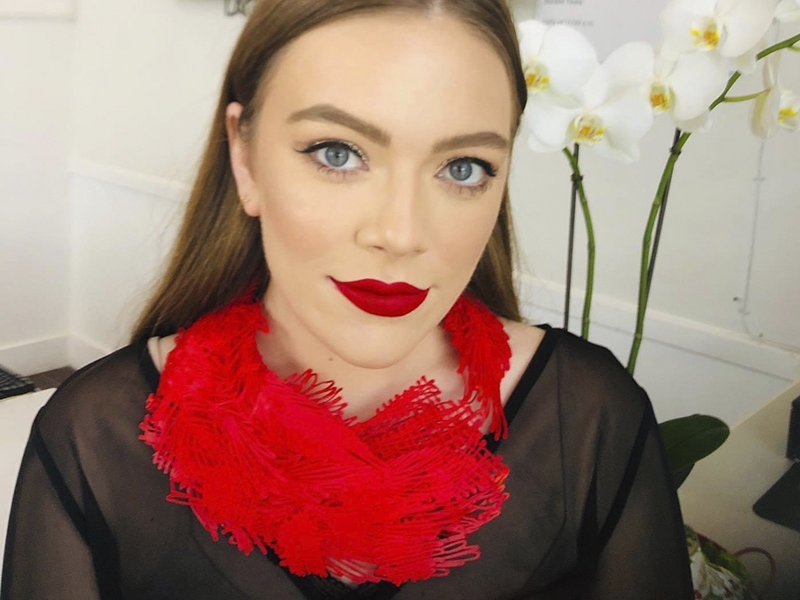
Please share with our readers anything intriguing you’ve read, seen, or heard.
Lisa M. Berman: I’m constantly learning. I’m being introduced to new concepts (like NFTs). I’m intrigued by science/biomimicry and how nature gives answers for some of our most pressing challenges. I’m intrigued by the cross-section of design, science, and creativity. I’m intrigued how our experiences shape our lives. That’s why I often say “yes!”
I was thrilled to recently be invited to an architects-only, hardhat and yellow safety vest walkthrough of the Orange County Museum of Art. (It’s still under construction.) Visualizing the art to be placed in specific locations after construction ends was fascinating. As we walked, I saw pieces of left-over construction debris. It gave me an idea. I will ask artists to make wearable art pieces to celebrate this new museum. I talked to the project manager about it. I’m making progress on the concept. Moss doesn’t grow under my feet…

On black mannequin: crystal and stainless steel necklace by Gregg Orloff, rubber collar by Thea Tholsma, stainless steel belt by Daniel Oropeza; on red mannequin: vinyl collar by Jeanette Metsellar, yellow brooch by Sofia Bjorkman; on gray mannequin: resin necklace with gold by Cara Croninger (24K show at RLM), stainless steel belt with vintage glass designed by Statements Accessories, made by Bo’s Art, on Lisa M. Berman: BLUE Square Clouds (chiffon) by costume designer Swinda Reichelt, bracelet by Gaetano Pesce; on table: sculpture by Craig French, Consecutive circle collars by Yves Amu Klein, acrylic earrings by Cara Croninger, coffee lid earrings by Marianna Nelson; on wall: a presentation of BOX-ART brooches by Marc Cohen for Every Picture Tells a Story
